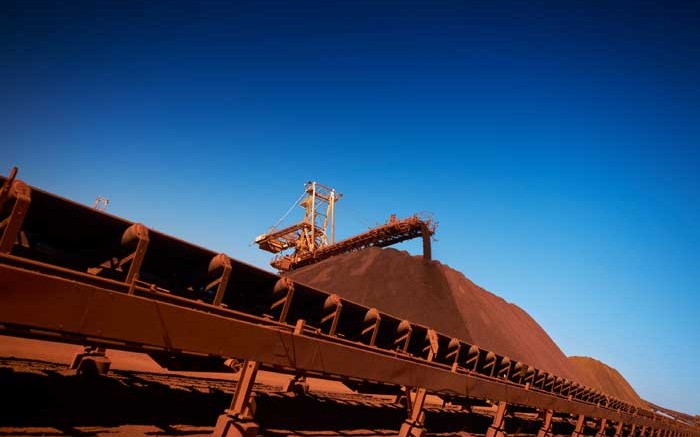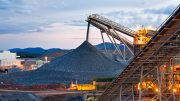The current iron ore market “looks like a game of chicken where no player has blinked,” says the Hong Kong and Shanghai Banking Corp.
HSBC, one of the largest banking and financial institutions in the world, is cutting its 2015 forecast for iron ore prices to US$85 per tonne from US$105 per tonne, and its long-run price from US$92 per tonne to US$80 per tonne.
The bank says its revisions are partly driven by recent comments from Rio Tinto (NYSE: RIO; LSE: RIO), BHP Billiton (NYSE: BHP) and Vale (NYSE: VALE) that suggest the major producers “are likely to continue to compete heavily on production growth and costs, with little regard for market outcomes.”
“The reaction to low prices seems to be lowering unit costs through continued expansion,” the bank continues. “This is pushing out high-cost Chinese supply, and we think this will continue to dominate pricing in 2015.”
HSBC also points out that the three major iron ore producers “have a fundamental competitive advantage of having high-grade material which needs little to no processing, and is delivered through large-scale infrastructure.” In addition, “they are based in commodity-currency nations, which means their costs fall in U.S. dollar terms during downturns.”
A recent trip to Australia’s Pilbara region confirmed that cash costs (before royalties and freight) are US$20 per tonne for Rio Tinto and US$25.89 for BHP, the bank said in its Oct. 23 report.
Falling iron ore prices aren’t just bad for producers of the metal, they could also become a political issue in Australia, given that Western Australia imposes a 7.5% royalty on iron ore, and its revenues are exposed to iron ore price volatility. According to HSBC, Western Australia’s budget is based on a forecast price of US$122.70 per tonne for the 2014–15 fiscal year, and iron ore royalties make up 20% of the Western Australian government’s revenues.
In a speech to parliament on Oct. 14, Western Australia’s Premier Colin Barnett said it was a “strange policy — indeed a flawed policy — that the major iron ore producers would be putting more and more product into a declining, soft market.” He also said he found it “strange that the companies are acting seemingly in a concert way.”
Ivan Glasenberg, Glencore’s (LSE: GLEN) CEO, has also urged the industry to restrict iron ore production growth. This act might win the company some brownie points with the Australian Foreign Investment Review Board if Glencore takes another run at Rio Tinto, the HSBC report suggests.
Based on 7.5% royalties, US$8-per-tonne freight costs and a 30% tax rate, HSBC calculates the lower prices will cause a 25% contraction in Australia’s government revenues from royalty and income tax, or a US$5-billion reduction from 2014 to 2016.
“This occurs even as production expands — so the additional [71-million-tonne volume, worth another US$1.9 billion at current royalty/tax rates] that is coming on does not offset the fall in royalty and tax take owing to a [-US$7.3 billion reduction, leaving a net reduction of US$5.4 billion] in prices.
The impact is even greater when you factor in declining capital spending, HSBC adds. “Just BHP and Rio alone are pulling capital spending back by US$2 billion per year at present, some of which would have been spending on contractors and labour that also benefitted the local economy.”





Be the first to comment on "HSBC cuts iron ore price forecasts"